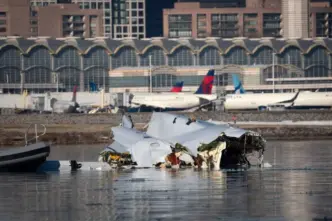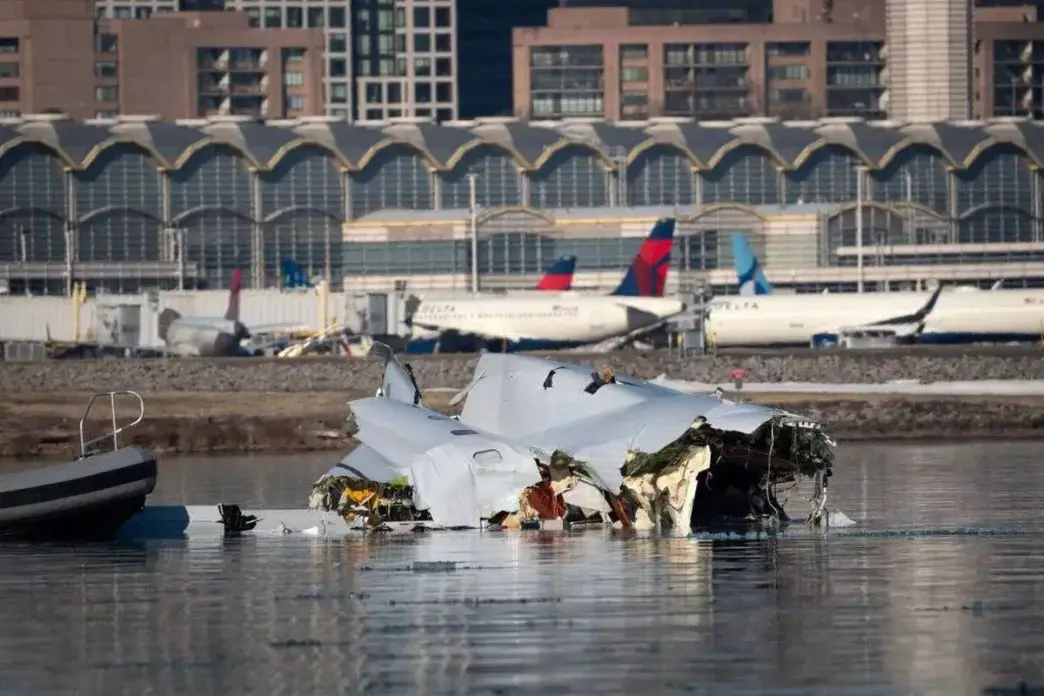A tragic collision between a US Army helicopter and a passenger plane on January 29 at Washington DC’s Ronald Reagan International Airport claimed 67 lives, marking one of the deadliest aviation disasters in recent memory.
According to a new report, the pilot of the Army Black Hawk helicopter, Captain Rebecca Lobach, made two critical errors just seconds before the crash. The accident occurred around 8:48 PM, as American Airlines Flight 5342, carrying 64 passengers, was preparing to land. Everyone aboard both aircraft—including a team of young figure skaters and three Army personnel—was killed.
An investigation by The New York Times revealed that the tragedy could have been prevented if not for these two key mistakes. Moments before impact, air traffic controllers warned the Black Hawk crew about the nearby passenger jet. The helicopter crew acknowledged the warning and requested permission to perform a “visual separation”—a standard maneuver where pilots visually maintain a safe distance from other aircraft, rather than relying solely on air traffic control.
Permission was granted, however, Captain Lobach failed to properly separate visually from the incoming plane. It remains unclear whether she did not see the jet or was unable to maneuver the helicopter in time.
At the time, Captain Lobach—who had accumulated roughly 500 hours of flight experience—was undergoing her annual flight evaluation. Her evaluator and co-pilot, Chief Warrant Officer Andrew Eaves, relayed an additional instruction from the tower: turn left toward the east bank of the Potomac River. This maneuver would have increased the distance between the two aircraft. However, Lobach did not follow this order, and just 15 seconds later, the collision occurred, resulting in a massive fireball over the river.
Flight data has not clarified why the left turn was not executed. Investigators found no evidence that Captain Lobach was experiencing any health problems or medical emergencies that could have impaired her performance.
A possible contributing factor was a microphone malfunction inside the helicopter. Investigators believe that if both pilots pressed their transmit buttons at the same time, it could have blocked incoming radio communications. This malfunction may have prevented the crew from hearing a critical command from the tower to “pass behind” the passenger jet.
Jennifer Homendy, chair of the US National Transportation Safety Board, explained that 17 seconds before the crash, the control tower instructed the Black Hawk to pass behind the oncoming plane. However, data from the cockpit voice recorder suggests the Black Hawk crew may not have received the full transmission.
At the time of the crash, Captain Lobach was also being tested on her use of night vision goggles, which she and her co-pilot reportedly wore throughout the flight. Investigators believe this may have further impaired their visibility and spatial awareness during the crucial moments.
Additionally, according to Senator Ted Cruz, the helicopter’s Automatic Dependent Surveillance–Broadcast (ADS-B) system—which transmits vital data such as altitude, location, and tracking information—had been switched off minutes before the crash. Without this system active, an extra layer of situational awareness that could have helped prevent the disaster was missing.









